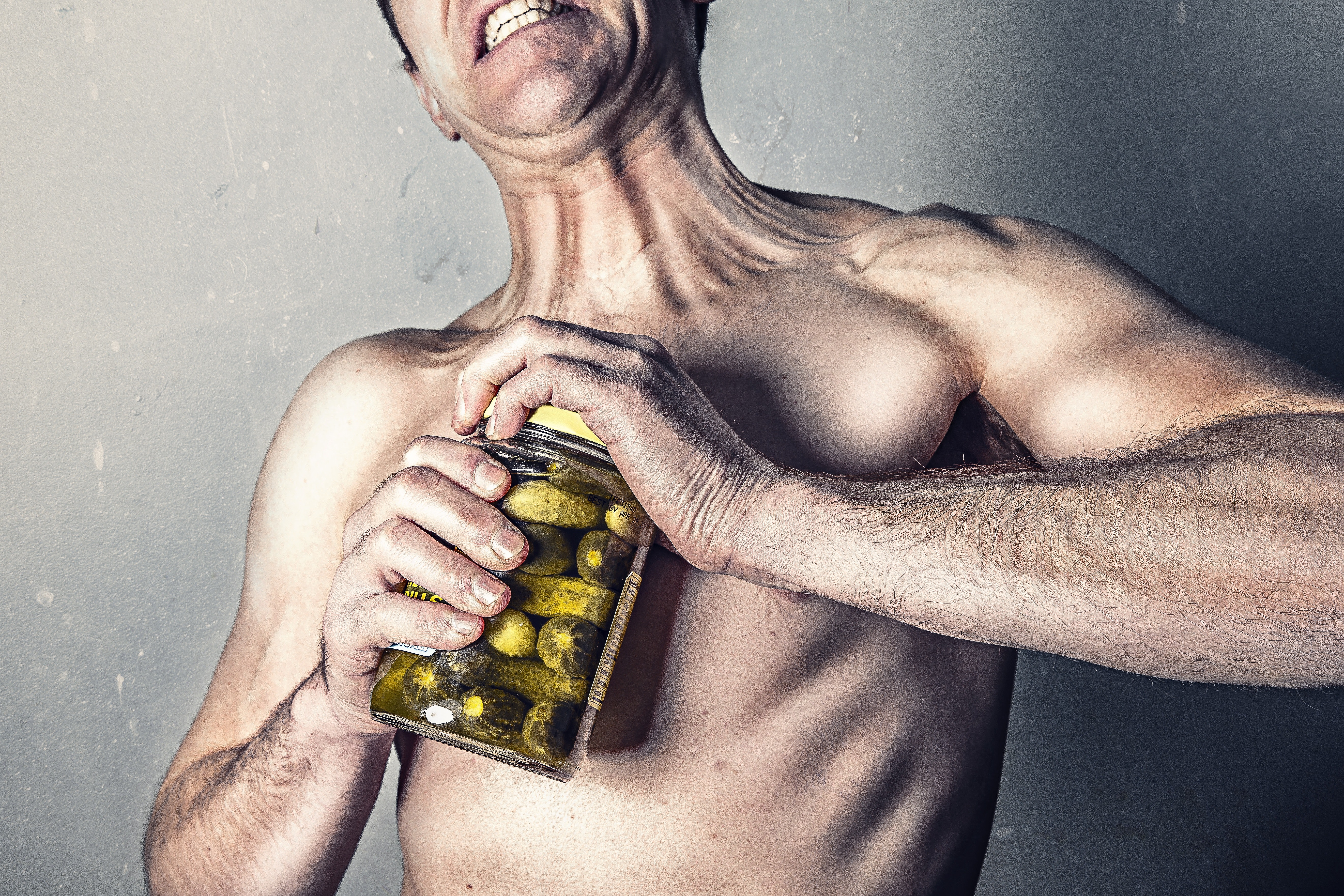
Can pickle juice really cure muscle cramping?
Believe it or not, studies have proven it can. Here’s the science on why and how it works.
Popular wisdom holds that muscle cramps are caused by a lack of electrolytes. Scientific research shows that it’s more likely that muscle cramps are due to the failure of a intramuscular mechanism that usually keeps extreme muscle contraction in check.
Like any ailment that affects athletes, there’s a veritable arsenal of remedies and tricks that runners and athletic trainers swear by to prevent or clear up a muscle cramp. For example one simple trick—gently stretching out the cramping muscle—proved to be quite successful, and gave researchers a clue as to the real mechanism behind cramping.
Old-school athletic trainers swear by gulping down a mouthful of pickle juice as a rapid cure for muscle cramping.Today, we are all about the pickle juice, how and why it works on your muscle cramps!
The logic behind this was that the liquid left in the pickle jar is incredibly salty and full of electrolytes. Here’s the paradox: there’s fairly strong evidence that your body’s electrolyte levels are not the only factor whether or not you develop muscle cramps during exercise.
Pickle Juice To The Test?
Exercise-associated muscle cramps can be tricky to study in a controlled environment, because the cramp location and severity can vary from person to person. A better way to study cramps in a controlled environment is to artificially induce them. By electrically stimulating a leg nerve researchers can cause cramps on demand, in specific area. Then, by using an electromyography machine, or EMG, they can quantify the length and severity of a muscle cramp.
A 2010 study using this protocol was published by Kevin Miller and colleagues at North Dakota State University and Brigham Young University. In the paper, the researchers used an electrical current to induce foot cramps in a group of 12 volunteers. Two cramps were induced, each separated by 30 minutes.
The effects of the pickle juice were rapid and impressive: The control cramps and the cramps followed by water consumption lasted over two minutes, while cramps followed by pickle juice consumption lasted less than a minute and a half—a reduction of almost 50%!
Are cramps really due to electrolyte loss?
So, due to the impressive effects of pickle juice revive the “cramps are because of electrolytes” hypothesis?
Miller and his co-workers designed another experiment to test this idea.
This time, nine healthy men underwent three trials where they were given two to three fluid ounces of pickle juice, a sports drink, or plain water. After drinking the liquid, Miller took blood samples every few minutes over the course of the next hour, then analyzed the water and electrolyte content of the blood samples to observe the impact of each liquid.
None of the three liquids produced any substantial changes in electrolyte or hydration levels, (which is not surprising considering how small the ingested volume of liquid was 2-3 fluid ounces when compared to the amount of water in the entire body several gallons).
Miller et al. conclude that — the electrolytes in 2-3 ounces of pickle juice are negligible when compared to sweat losses during exercise.Further, there’s no way the electrolytes could make their way into the blood within a minute or two after ingestion.
Conclusion
So, in a roundabout way, investigating the “pickle juice cure” leads to two surprising conclusions:
First, it works very well! You can expect a shot of pickle juice to decrease the length of a muscle cramp by almost half.
Second, because of how quickly the pickle juice acts, this result provides more evidence that muscle cramps are caused by a malfunction of the nervous system, a glitch that leaves a muscle unit stuck in an “on” position.
If you’ve had major cramping problems during your workouts or races, it might be worth giving pickle juice a try.
The procedure from Miller. calls for drinking 2-3 fluid ounces of pickle juice—in the studies, strained from regular Vlasic dill pickles—as soon as possible following the onset of a cramp.
Recent Comments